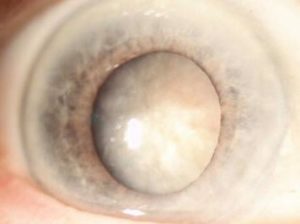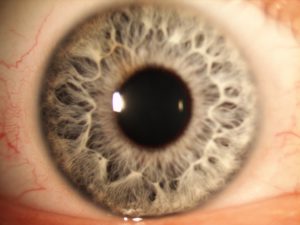The cataract is the loss of transparency of the natural lens of the eye. As the lens is located behind the pupil, the cataract is visible only if it is complete and white
(“Overripe cataract”). Most often, the eye has a externally normal appearance.

Complete cataract: the lens has become opaque.

Lucidis lens implant

Operated eye of the cataract, the appearance is the same as a normal eye.
The causes of cataracts are various:
The most common cause is aging.
From about 75 years old, having cataract is completely normal. However, there are people 60 years old or younger who already have an opaque lens, while their health is excellent. Conversely, there are 80-year-old people who have almost no cataracts. There are families where senile cataract occurs early.
There are congenital cataracts.
Children are born with an opaque lens, sometimes with both eyes.
There are traumatic cataracts.
Diabetes and other general diseases can sometimes cause or accelerate the opacification of the lens.
Some intraocular inflammations (uveitis) have the same effect.
Cortisone and its derivatives lead after a few months of treatment irreversible cataract, regardless of the mode of administration.
Myopia often leads to early cataracts.
Finally, we often meet cataracts whose cause remains unknown
Process
All cataract operations are performed under a microscope.
Anesthesia is either topical (a local anesthetic drop, without injection) or general. If deemed useful, an anesthesiologist is present throughout the procedure, even if the anesthesia is topical.
The steps of the surgery are :
1. Corneal incision of +/- 2 millimeters.
2. Emulsification of the lens nucleus.
3. Implantation of the lens.
The implant is a small lens that focuses the images on the retina. It is inserted into the capsular bag. In some cases, it is possible to use a “multifocal” implant allowing a good view from far and near.


